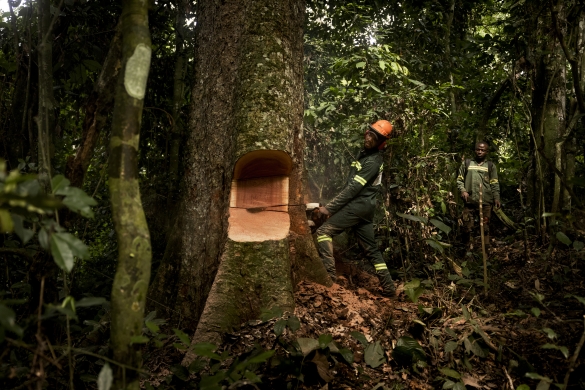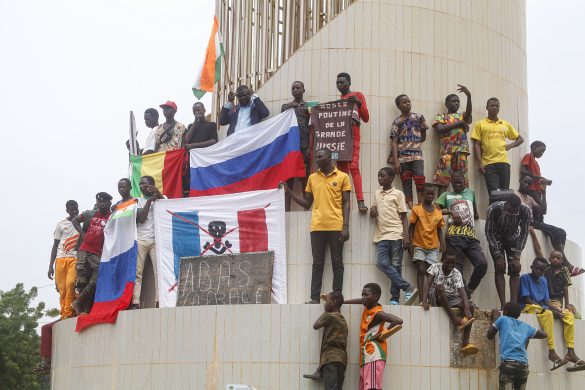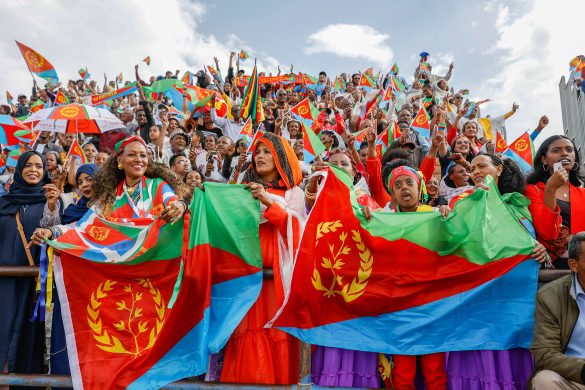Africa has come a long way in creating the military infrastructure needed to address armed conflicts and security threats on the continent. “I think few practitioners realise just how far this project has come,” says Mikael Eriksson.
The ongoing militarisation will affect how external actors such as the EU and US engage with Africa in the future.
Together with fellow NAI researcher Linnéa Gelot, he is involved in a research project called “AU waging peace?,” which aims to identify the nature and implications of the militarisation of the African Union.
While military cooperation in Africa still primarily takes place on a regional level through the AU’s eight regional economic communities (RECs), activities to address security threats in Africa can increasingly be branded as “continental.”
At the moment, two options are being put forward: establishment of an African Standby Force, ASF, based on standing REC armed forces; and a continental force, the so-called African Capacity for Immediate Response to Crises (ACIRC).
ACIRC is meant to be a focused, flexible and high-readiness force capable of being deployed at short notice anywhere in Africa.
It would also allow the AU to bypass complex consultations with the RECs and regional mechanisms before airlifting troops into battle theatres.
However, as ACIRC is beset by constraints due to rivalry between Africa’s regional powers and regarding funding, the AU is now pushing for the ASF option.
Underfinanced sectors
While a militarised African Union has several merits, according to Eriksson the debate seems to be overlooking the larger and perhaps more important issue of how the resources of African governments are used.
“Many sectors, such as health and education, are generally underfinanced in African countries. Not everyone will agree that a hugely expensive pan-African military organisation, be it ASF or ACIRC, is what Africa needs most.”
He notes that African and non-African actors generally tend to focus on short-term threats, rather than longer-term challenges such as the ability to deal with the effects of climate change.
Eriksson also sees a risk of “over-securitisation,” which occurs when unconventional threats such as the Ebola pandemic are placed on the security agenda, thus taking resources away from sectors such as health.
Aim for independence
Current militarisation of African peace and security architecture also raises the question of ownership.
The AU needs to show the capacity and resolve to handle continental security threats. This in turn brings to the fore the ideology of pan-Africanism, which can be traced as far back as the 1860s.
“It was mainly formulated by the early black movement in the US, and encompassed ‘unity of the black race,’ protection of black people and enhancement of their dignity. Later, Pan-Africanists became preoccupied with questions such as decolonisation and freedom of African peoples under settler rule,” Eriksson explains.
Then, as now, African integrationists aim for complete independence and ownership. The creation of a continental force is testimony to this, according to Eriksson. But the question is, “at what expense and with what implications?,” he says.
A key player
Today’s globalised world sees pan-Africanism in a different light, he notes. On one hand, it remains to be seen whether other world actors are prepared to allow a new, independent African military power to arise.
“Yet on the other,” he adds, “We are living in an age when regional organisations such as the AU are key players in dealing with peace and security threats, both in terms of the UN Charter and in practice. This is why it is so crucial that we deepen our understanding of the AU project.”
FACTS: ASF
The Constitutive Act gives the AU the right to intervene in a Member State in grave circumstances, namely war crimes, genocide and crimes against humanity.
As per Article 13 of the Protocol Relating to the Establishment of the Peace and Security Council of the African Union, the African Standby Force (ASF) is based on standby arrangements with Africa’s five sub-regions.
The protocol setting out the ASF was signed in July 2002 and entered into force in December 2003. More about ASF.
FACTS: ACIRC
In May 2013 the AU adopted an interim measure in transition to the ASF, to establish the so-called African Capacity for Immediate Response to Crises (ACIRC).
It was decided that the ACIRC force should be able to intervene in a robust way sustain operations for at least 90 days. Thereafter, a United Nations or AU force is meant to take over operations.
Participating countries are Algeria, Angola, Benin, Burkina Faso, Egypt, Mozambique, Niger, Rwanda, Senegal, South Africa, Sudan, Tanzania, Tchad and Uganda.
More about the African Peace and Security Architecture, APSA.














